
Messier 59 or M59, also known as NGC 4621, is an elliptical galaxy in the equatorial constellation of Virgo. It is a member of the Virgo Cluster, with the nearest fellow member 8′ away and around 5 magnitudes fainter. The nearest cluster member of comparable brightness is the lenticular galaxy NGC 4638, which is around 17′ away. It and the angularly nearby elliptical galaxy Messier 60 were both discovered by Johann Gottfried Koehler in April 1779 when observing comet seeming close by. Charles Messier listed both in the Messier Catalogue about three days after Koehler's discovery.
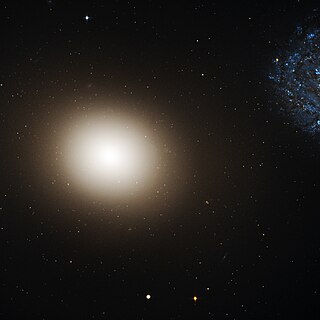
Messier 60 or M60, also known as NGC 4649, is an elliptical galaxy approximately 57 million light-years away in the equatorial constellation of Virgo. Together with NGC 4647, it forms a pair known as Arp 116. Messier 60 and nearby elliptical galaxy Messier 59 were discovered by Johann Gottfried Koehler in April 1779, observing a comet in the same part of the sky. Charles Messier added both to his catalogue about three days after this.

A dwarf galaxy is a small galaxy composed of about 1000 up to several billion stars, as compared to the Milky Way's 200–400 billion stars. The Large Magellanic Cloud, which closely orbits the Milky Way and contains over 30 billion stars, is sometimes classified as a dwarf galaxy; others consider it a full-fledged galaxy. Dwarf galaxies' formation and activity are thought to be heavily influenced by interactions with larger galaxies. Astronomers identify numerous types of dwarf galaxies, based on their shape and composition.

NGC 4395 is a nearby low surface brightness spiral galaxy located about 14 million light-years from Earth in the constellation Canes Venatici. The nucleus of NGC 4395 is active and the galaxy is classified as a Seyfert Type I known for its very low-mass supermassive black hole.

NGC 1097 is a barred spiral galaxy about 45 million light years away in the constellation Fornax. It was discovered by William Herschel on 9 October 1790. It is a severely interacting galaxy with obvious tidal debris and distortions caused by interaction with the companion galaxy NGC 1097A.

NGC 2787 is a barred lenticular galaxy approximately 24 million light-years away in the northern constellation of Ursa Major. It was discovered on December 3, 1788 by German-born astronomer William Herschel. J. L. E. Dreyer described it as, "bright, pretty large, a little extended 90°, much brighter middle, mottled but not resolved, very small (faint) star involved to the southeast". The visible galaxy has an angular size of 2.5 × 1.5 arcminutes or 3.24 × 1.81 arcminutes and an apparent visual magnitude of 11.8.
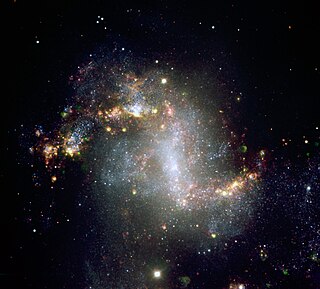
NGC 1313 is a field galaxy and a barred spiral galaxy discovered by the Scottish astronomer James Dunlop on 27 September 1826. It has a diameter of about 50,000 light-years, or about half the size of the Milky Way.

NGC 1277 is a lenticular galaxy in the constellation of Perseus. It is a member of the Perseus Cluster of galaxies and is located approximately 73 Mpc (megaparsecs) or 220 million light-years from the Milky Way. It has an apparent magnitude of about 14.7. It was discovered on December 4, 1875 by Lawrence Parsons, 4th Earl of Rosse.

NGC 266 is a massive barred spiral galaxy in the constellation Pisces. NGC 266 is located at a distance of 197 megalight-years from the Milky Way. It was discovered on September 12, 1784, by William Herschel. The form of this barred galaxy is described by its morphological classification of SB(rs)ab, which indicates a quasi-ring-like structure (rs) and moderate-to-tightly wound spiral arms (ab). It is the dominant member of a small group with six low-mass galaxies.

NGC 4660 is an elliptical galaxy located about 63 million light-years away in the constellation Virgo. The galaxy was discovered by astronomer William Herschel on March 15, 1784 and is a member of the Virgo Cluster.

NGC 3311 is a super-giant elliptical galaxy located about 190 million light-years away in the constellation Hydra. The galaxy was discovered by astronomer John Herschel on March 30, 1835. NGC 3311 is the brightest member of the Hydra Cluster and forms a pair with NGC 3309 which along with NGC 3311, dominate the central region of the Hydra Cluster.
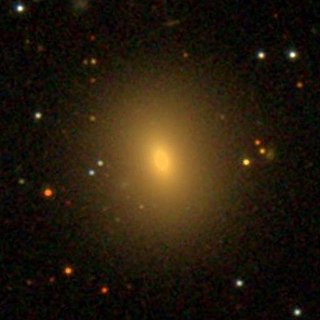
NGC 1270 is an elliptical galaxy located about 250 million light-years away in the constellation Perseus. It was discovered by astronomer Heinrich d'Arrest on February 14, 1863. NGC 1270 is a member of the Perseus Cluster and has an estimated age of about 11 billion years. However, Greene et al. puts the age of NGC 1270 at about 15.0 ± 0.50 Gy.

NGC 1281 is a compact elliptical galaxy located about 200 million light-years away in the constellation Perseus. NGC 1281 was discovered by astronomer John Dreyer on December 12, 1876. It is a member of the Perseus Cluster.

NGC 708 is an elliptical galaxy located 240 million light-years away in the constellation Andromeda and was discovered by astronomer William Herschel on September 21, 1786. It is classified as a cD galaxy and is the brightest member of Abell 262. NGC 708 is a weak FR I radio galaxy and is also classified as a type 2 Seyfert galaxy.
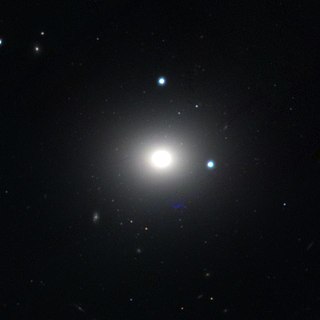
NGC 1395 is an elliptical galaxy located in the constellation Eridanus. It is located at a distance of circa 75 million light years from Earth, which, given its apparent dimensions, means that NGC 1395 is about 130,000 light years across. It was discovered by William Herschel on November 17, 1784. It is a member of the Eridanus Cluster.
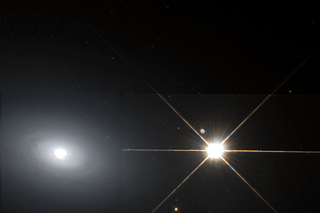
NGC 2974 is a lenticular galaxy located in the constellation Sextans. It is located at a distance of circa 90 million light years from Earth, which, given its apparent dimensions, means that NGC 2974 is about 90,000 light years across. It was discovered by William Herschel on January 6, 1785. NGC 2974 is located in the sky about 2 and a half degrees south-south east of Iota Hydrae and more than 6 degrees northeast of Alphard. A 10th magnitude star lies next to the galaxy, thus making it a challenging object at low magnifications. NGC 2974 is part of the Herschel 400 Catalogue.

NGC 4318 is a small lenticular galaxy located about 72 million light-years away in the constellation Virgo. It was discovered by astronomer John Herschel on January 18, 1828. NGC 4318 is a member of the Virgo W′ group, a group of galaxies in the background of the Virgo Cluster that is centered on the giant elliptical galaxy NGC 4365.
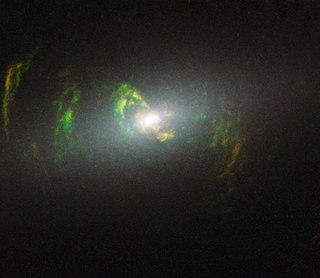
NGC 5252 is a lenticular galaxy located in the constellation Virgo. It is located at a distance of about 220 to 320 million light years from Earth, which, given its apparent dimensions, means that NGC 5252 is about 100,000 light years across. It was discovered by William Herschel on February 2, 1786.

NGC 3801 is a lenticular galaxy located in the constellation Leo. It is about 150 million light years from Earth, and estimated to be about 170,000 light years in diameter. William Herschel discovered it on 17 April 1784.



















